
views
Understanding Pruning Basics
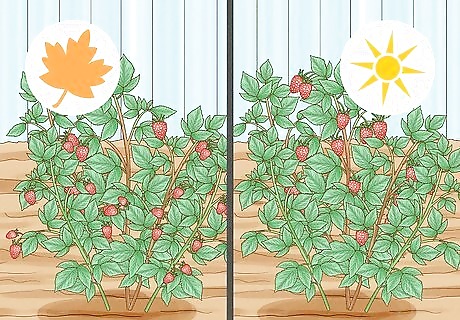
Understand the two basic types of raspberries. Raspberry plants grow in two different types: fall-fruiting (which bear fruit on both primocanes and floricanes) and summer-fruiting (which only bear fruit on floricanes). The terms ‘primocane’ and ‘floricane’ refer to two different types of canes that the raspberry bramble produces. Primocanes are the canes that grow during the first year while floricanes are the second-year canes. Additionally, fall-bearing plants bear fruit in the fall and may have a second season in early summer, while summer-bearing plants fruit only in the summer. Because of their different growth patterns, they require different pruning measures in order to be effective. Fall-bearing raspberries will bear fruit both primocanes and floricanes, while summer-bearing raspberries will only bear fruit on floricanes.
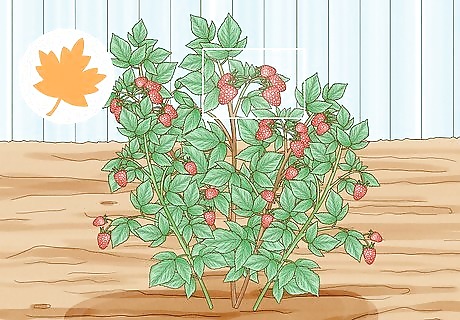
Determine if you are growing fall-bearing raspberries. Sometimes also called everbearing raspberries, fall-bearing raspberries require much more pruning than summer-bearing raspberries. Fall-bearing raspberries contain three separate types of canes: primocanes, floricanes, and non-fruiting suckers. Primocanes are green and flexible shoots that grow directly from the ground; instead of branches, they may have small buds attached directly to the cane. Floricanes are tall, thick branches that have a darker brown bark on their stems. Floricanes have smaller lateral shoots attached at the sides where the fruit will grow. Non-fruiting suckers are small, spindly canes that are typically ½ the size and width of primocanes and floricanes. As the name suggests, non-fruiting suckers don’t produce any fruit, and serve no productive purpose. Fall-bearing raspberries are typically red and yellow varieties, although they may also be purple or black. Fall-bearing raspberries may not produce twice a year, especially if they are older plants that have never been pruned.
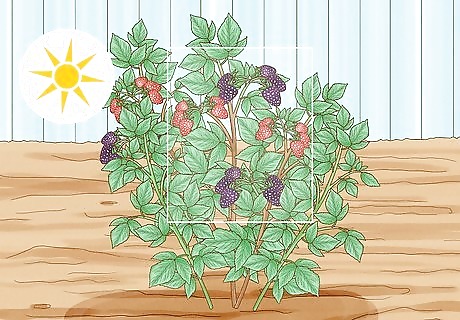
Determine if you are growing summer-bearing raspberries. Although technically both fall and summer bearing raspberries fruit in the summer, summer-bearing raspberries only bear fruit in the summer, and they only bear fruit on floricanes. When pruning summer-bearing varieties, you will need to allow the primocanes to grow and become floricanes in order to produce fruit. Summer-bearing raspberries include some red varieties, as well as most of the purple and black varieties of raspberries. When cut open, floricanes will be brown and dead on the inside. They tend to be grayish/tan.

Know when to prune. Raspberries of both summer and fall bearing varieties should be pruned in the winter. This is because the berry canes are fully dormant during this time, so any pruning will stimulate growth, rather than damaging the current growth pattern. Raspberries can be pruned any time between November and March. Some horticulturists prefer pruning around February or March, because the root system has had time to store more carbohydrates, leading to a better harvest.
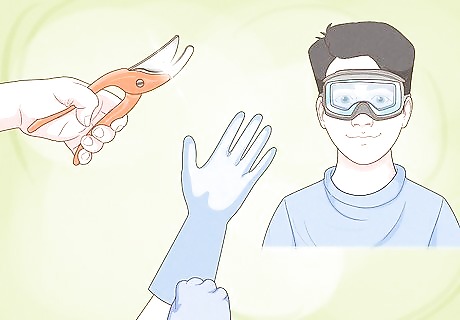
Get the right tools. For pruning, you’ll need a good set of gardening shears or loppers, a pair of gardening gloves, and safety goggles. Raspberry brambles tend to be thorny, or at least have pointed branches, making safety a priority while pruning.
Pruning Fall-bearing Raspberries
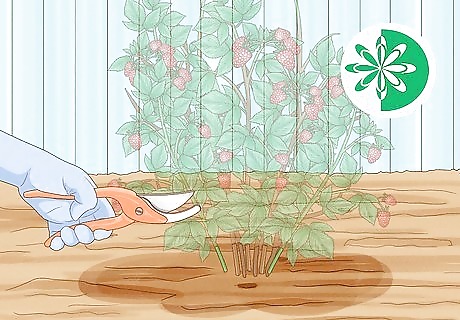
Cut the plant to the ground. The easiest way to prune fall-bearing raspberries is to cut everything down to ground level in spring. Instead of having a summer harvest, you will only have one harvest in the fall. This fall harvest may produce higher quality raspberries.
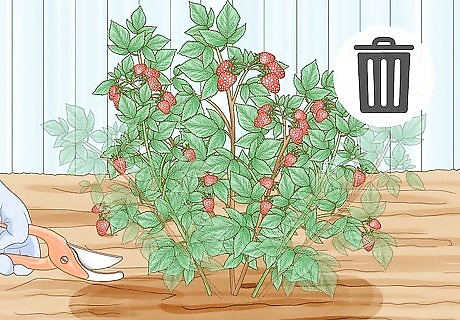
Thin the primocanes to get two harvests. If you would like both a fall and summer harvest, do not cut down all of your canes. Instead, you should thin out the canes so that there are about four or five primocanes per foot. Raspberry bushes need lots of space to spread out and grow, so having too many canes will restrict growth and overall harvest. Cut the extra canes at ground level, and discard them when done.
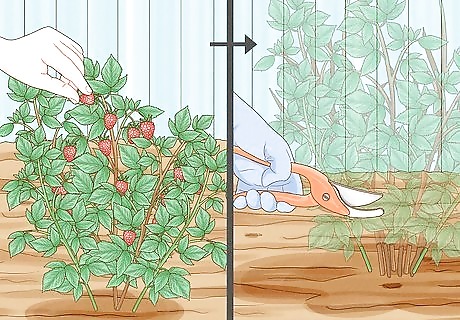
Cut down floricanes after the summer harvest. Floricanes should be cut down every second year, after they have produced a crop. This is because they will not produce another crop. Use your shears to cut them to the ground. Remove them in the summer after you harvested the berries and before the fall crop has come in.
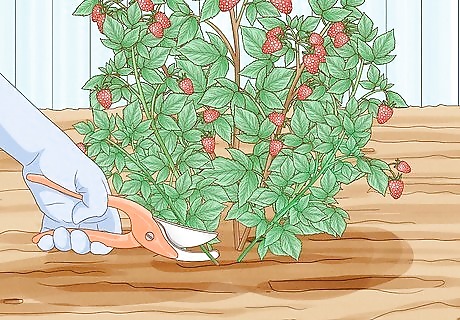
Remove any non-fruiting suckers. Non-fruiting suckers are small, thin, short canes that take up space in the raspberry bramble. Because they don’t bear fruit and use up valuable space, they should all be removed. Use your shears to cut them at the ground, leaving none of the cane above ground. Don’t pull them out from the ground, as this will pull up the root system of the healthy primocanes, thereby killing your raspberry bush.

Remove any sickly or dead primocanes. These one-year branches would have produced fruit in the fall. Dead or sickly primocanes will be gray or black-ish in color, and when broken in half, won’t contain any green wood in the center. They will appear dry, thin, and brittle. Do not leave old canes in your raspberry patch, as they carry disease that could contaminate your new fruiting crop.
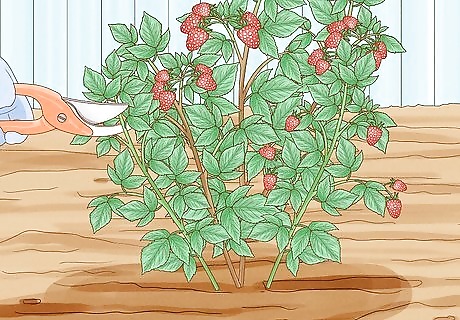
Prune the tips of the remaining primocanes. Although you don’t have to prune the tips of the primocanes, it may make it easier to harvest them later if the canes are particularly tall. It might also encourage a larger crop. Use your shears to cut about six or twelve inches off of the tips. Do not remove more than 25% of any one primocane. Doing so will significantly reduce the overall harvest. This practice of cutting the tips off is also known as ‘pinching’. A good time to do this is in July. This will delay the harvest slightly to avoid the heat of summer. This is not recommended in the north-eastern United States because it may leave the plants open to winter injury.
Pruning Summer-bearing Raspberries
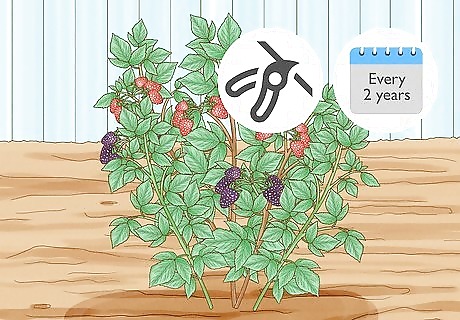
Know how often to prune. Summer-bearing raspberries only bear fruit on floricanes, which means that you need to let the canes grow for two years to produce fruit. Generally, you will prune floricanes to the ground after they have fruited. Allow primocanes to grow so that they will develop into floricanes and fruit in the second year. If there are too many primocanes, however, you may need to suppress them by thinning out their crop. Primocanes are often pruned in late spring while floricanes will be cut down after they have fruited or during the winter. Do not suppress primocanes until the plant is three years old. Thinning the primocanes too much may reduce the yield of your harvest.
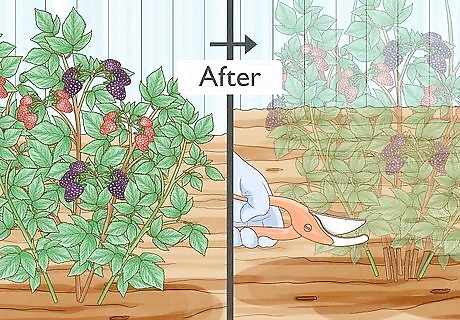
Cut down all the floricanes after they produce fruit. Floricanes die off after a single harvest, so leaving them will do you no good. Once they have produced a crop in the second year, use your shears to cut them at ground-level, and then toss out the branches when you’re done. You can also cut out non-fruiting suckers.
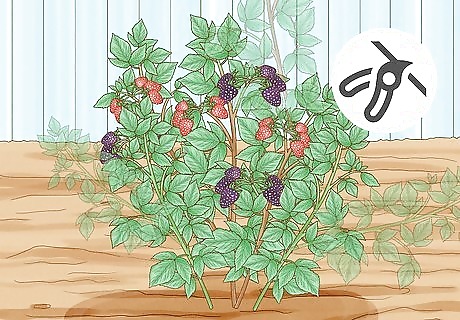
Thin out the canes. When your raspberry plant begins growing canes again, you may need to thin them to create a bigger crop. Too many canes will restrict the growing of each individual cane, limiting the total number of berries and the size of berries it will produce. Remove canes so that each cane is 9-inches from the next, keeping only the biggest, healthiest canes in the process. When pruning in late spring, you should leave four or five primocanes per foot, and let these grow into floricanes in the next year. Some people will prune the first set of emerging primocanes completely in late spring. Primocanes that emerge later are allowed to grow to produce fruit in the second year. This method should be skipped every third or fourth year, and it is not recommended for black raspberries.
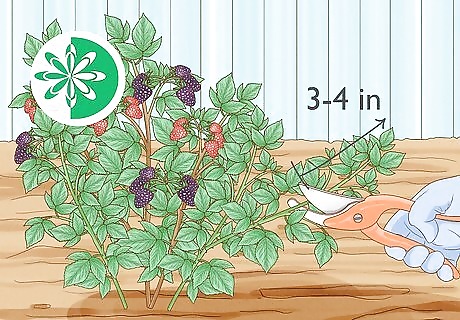
In the spring, pinch the tops of the canes if necessary. Pinching the canes in the process of cutting off a small amount of the tip, to stimulate more growth. Because your raspberries grow from the ground up each year, they likely won’t need to be pinched or pruned - they don’t have time to grow very large. However, if they become particularly tall, you can cut down 3–4 inches (7.6–10.2 cm) from the tips of the canes.
Trellising Your Berries

Set up the proper trellis. Raspberries need plenty of sunlight to grow a good harvest; to provide them with this, you can trellis them post-pruning. Use a ‘T’ shaped trellis with two parallel wires for a single row of raspberries. A 'T' shaped trellis is made by putting two t-shaped boards opposite each other. A piece of wire is strung from one arm of the 'T' to the arm opposite it, on both sides. This creates a row down the center for the berries to be planted in. Each row should be no wider than 2-feet wide.
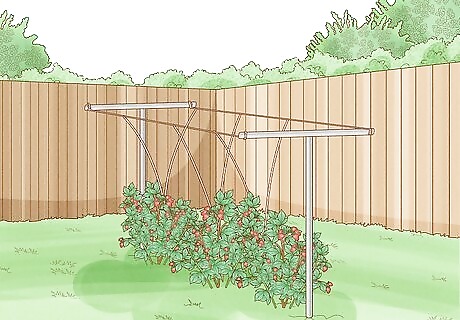
Know the proper way to trellis your berries. A row of raspberries will grow between two parallel trellis wires. Each cane from the plant should be tied to the wire, with 4–6 inches (10.2–15.2 cm) of spacing between canes. As a result, you will switch sides with the wires - one cane on the left wire, the next cane on the right wire, back and forth down the trellis. This will create a ‘V’ shape with all the canes, when viewed from one end of the trellis. Doing so allows for sunlight to reach the entire stalk of the cane, increasing the overall fruit production.
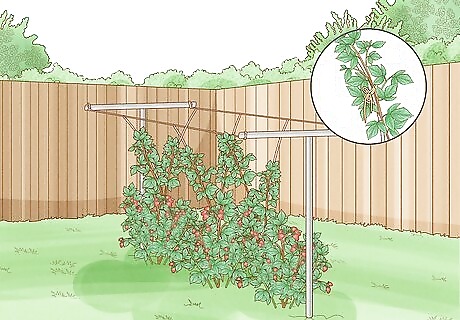
Tie each cane to the trellis. Bend each cane so that it touches the trellis wire on one side. Use a small piece of twine, a twist-tie, or another tying instrument to secure the cane to the wire. Don’t tie it too tight - only enough so that the wind can’t move it out of place, and so that the center of the cane is fully exposed to sunlight.


















![Kia Sonet Compact SUV to Launch in India Today: Watch it Live Here [Video]](https://cdn.rawisda.com/news/90/eb/76/90eb7699f91f82cb9d217ba52d313a8a-s.jpg)
Comments
0 comment